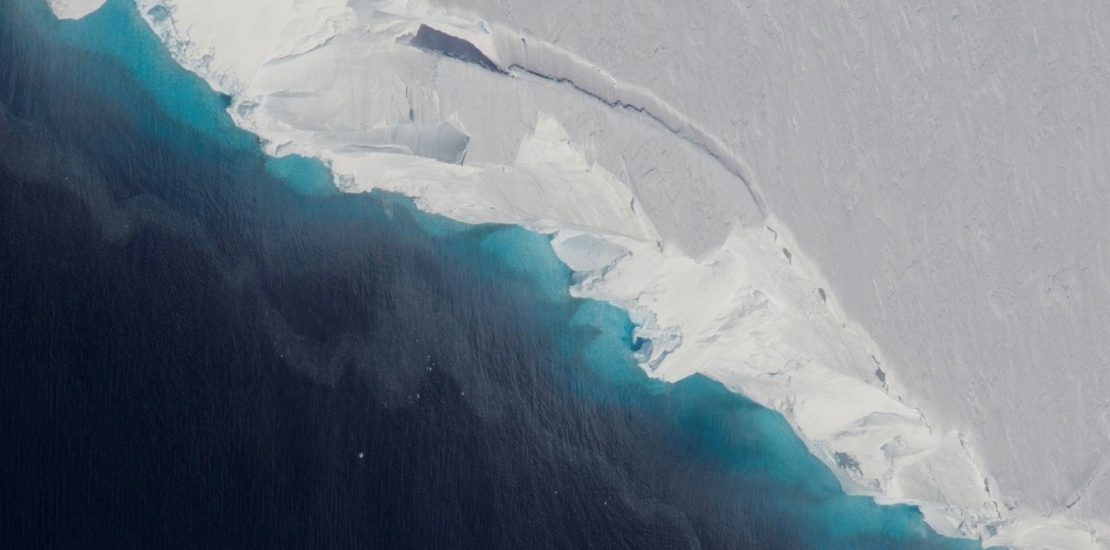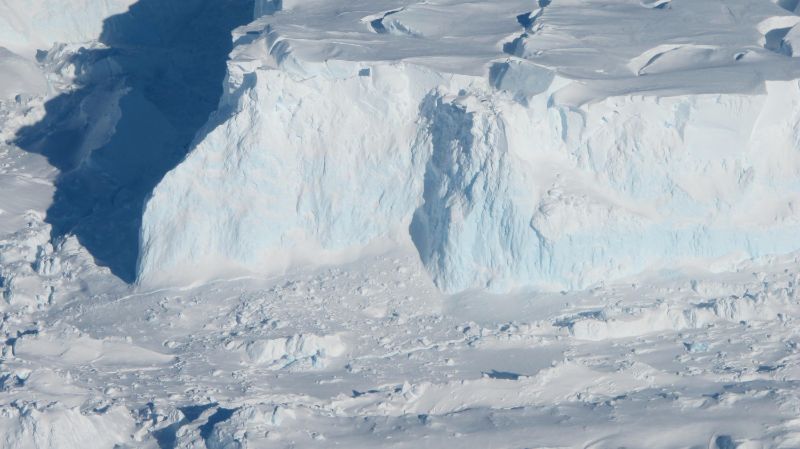NASA-funded research study warns Antarctic ice instability set to make sea level rise more rapidly
- July 15, 2019
- Posted by: administrator
- Category: Global, Water Issues, Arctic & Antarctica

A new research study says that instability hidden within Antarctic ice is likely to accelerate its flow into the ocean and push sea level up at a more rapid pace than previously expected.
In the last six years, five closely observed Antarctic glaciers have doubled their rate of ice loss, according to the National Science Foundation. The rate of ice flow into the ocean of some Antarctic glaciers has markedly accelerated, raising concerns.
At least one, Thwaites Glacier, modelled for the new study, is likely to succumb to this instability, a volatile process that pushes ice into the ocean fast.
How much ice the glacier will shed in the coming 50 to 800 years can’t exactly be projected due to unpredictable fluctuations in climate and the need for more data. However, researchers at the Georgia Institute of Technology, NASA Jet Propulsion Laboratory (JPL), and the University of Washington have factored the instability into 500 ice flow simulations for Thwaites with refined calculations.
The scenarios diverged strongly from each other but together pointed to the eventual triggering of the instability. Even if global warming were to later stop, the researchers warn, the instability would keep pushing ice out to sea at an enormously accelerated rate over the coming centuries.
Worryingly, this is if ice melt due to warming oceans does not get worse than it is today. The study used present-day ice melt rates because the researchers were interested in the instability factor in itself.
Glacier tipping point

Alex Robel, who led the study and is an assistant professor in Georgia Tech’s School of Earth and Atmospheric Sciences commented:
“If you trigger this instability, you don’t need to continue to force the ice sheet by cranking up temperatures. It will keep going by itself, and that’s the worry.”
“Climate variations will still be important after that tipping point because they will determine how fast the ice will move.”
NASA JPL scientist Helene Seroussi, who collaborated on the study added:
“After reaching the tipping point, Thwaites Glacier could lose all of its ice in a period of 150 years. That would make for a sea level rise of about half a meter (1.64 feet). For comparison, current sea level is 20 cm (nearly 8 inches) above pre-global warming levels and is blamed for increased coastal flooding.”
The study was published in the journal Proceedings of the National Academy of Sciences on Monday, July 8, 2019. The research was funded by the National Science Foundation and NASA.
The study also showed that the instability makes forecasting more uncertain, leading to the broad spread of scenarios. This is particularly relevant to the challenge of engineering against flood dangers.
Alex Robel continued:
“You want to engineer critical infrastructure to be resistant against the upper bound of potential sea level scenarios a hundred years from now,”
“It can mean building your water treatment plants and nuclear reactors for the absolute worst-case scenario, which could be two or three feet of sea level rise from Thwaites Glacier alone, so it’s a huge difference.”
Antarctic ice is the big driver of sea level rise
Antarctic ice is the big driver of sea level rise, according to the researchers. 90% of an iceberg’s mass is underwater – when its ice melts, the volume shrinks, resulting in no change in sea level.
Antarctica holds the most land-supported ice, even if the bulk of that land is seabed holding up just part of the ice’s mass, while water holds up part of it.
However, when ice masses long supported by land, like mountain glaciers, melt, the water that ends up in the ocean adds to sea level.
“There’s almost eight times as much ice in the Antarctic ice sheet as there is in the Greenland ice sheet and 50 times as much as in all the mountain glaciers in the world,” Robel said.
Normally, when climate conditions fluctuate strongly, Antarctic ice evens out the effects. Ice flow may increase but gradually, not wildly, but the instability produced the opposite effect in the simulations.
“The system didn’t damp out the fluctuations, it actually amplified them. It increased the chances of rapid ice loss,” Robel said.
To date Antarctica and Greenland have lost a small fraction of their ice, but already, shoreline infrastructures face challenges from increased tidal flooding and storm surges. Sea level is expected to rise by up to two feet by the end of this century.
For about 2,000 years until the late 1800s, sea level held steady, then it began climbing, according to the Smithsonian Institution. The annual rate of sea level rise has roughly doubled since 1990.
Gerard Roe from the University of Washington coauthored the study. The research was funded by the National Science Foundation and by a grant from NASA Cryospheric Science and Modeling, Analysis and Prediction Programs.
